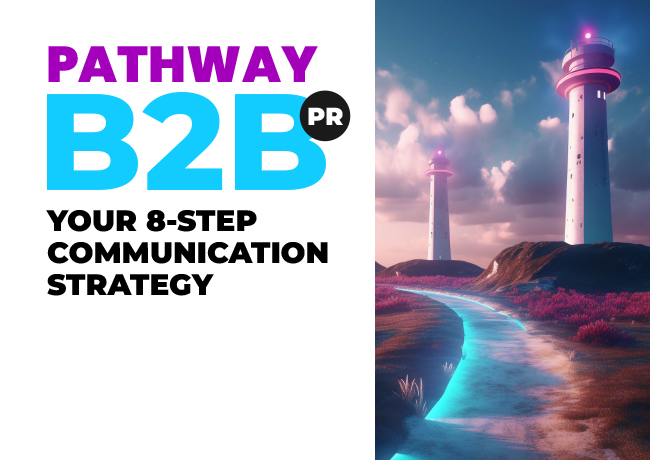
How to solve a problem like… brand visibility and engagement
For companies, particularly SMEs, looking to break into new territories for the first time, opening those doors, grinding the gears, and building the relationships will be time and resource intensive; often made even tougher due to a lack of brand visibility and familiarity. This is particularly the case in hyper-competitive, or emerging market segments – finding your voice and ‘cutting through the noise’ can be a make-or-break challenge.
This can be even more challenging in an environment where we can’t necessarily rely on as much face-to-face time with clients and prospects as we used to. The challenge with digital communications channels is that they can be ignored, they have ‘delete’ and ‘decline’ buttons, so the first battle you must fight is getting engagement in the first place, rather than focussing your energies on delivering your messaging, your USPs and why you deserve to be ‘in the room’.
A game of business Wackamole?
If you’re a growing company or you’re new to an industry and you have limited brand visibility, how do you drive this engagement without prospects simply dodging your meetings, deleting your emails, and declining your calls? A strategic communications approach can help businesses to find their voice and ensure they are heard. You need to be able to demonstrate expertise in your target customers’ field of interest, quickly, without waffle and in a way that will spark engagement. And, in this new post-Covid world, businesses need to be able to get their position across increasingly via digital channels.

‘Beige is Bad’ is not a positioning
Within any given sector, companies need to consider the issues and topics in which they want to have a voice – and be a thought leader. Take an exceptionally crowded space like ‘Digital Transformation’ where everyone seems to want a position, and the chances are the bigger players already hold the lion’s share of the conversation. What have you got to say that advances the conversation and enhances the quality of the debate? When you identify this, you hold the key to being heard.
Use proven approaches because they work
Businesses need to take a structured and highly targeted approach – to focus effort and resources – just like a building needs a robust framework, so does your business. This can be achieved most effectively by developing a communication strategy which comprise five key components anchored in your commercial requirements. These five components are: value proposition, industry prioritisation, target personas, positioning statements and messaging which serve to make all your efforts more focused and aligned. Essentially, the comms strategy creates consensus across the business determining what you need to achieve, where your lowest hanging fruit lies and what you need to say to persuade your target audience to buy from you so you can meet your commercial goals.
An example of an effective communication strategy
2i is one example of how effective a communication strategy can be when executed well. The company was a successful assurance and testing business enabling large organisations such as Aberdeen Standard, Virgin Money and the Scottish Government, to successfully manage their digital transformation journeys through the provision of expert delivery knowledge. 2i delivered a high-quality service, but not enough client organisations in the marketplace were aware of 2i and getting those meetings and securing those introductions was proving challenging. Despite working with some large, credible, well-known brands and delivering great work, 2i was competing for airtime in a crowded space and was getting lost in the noise.
Through the process of working through the communication strategy, 2i was able to define what it is they offered to their target market that was unique and different. They were able to understand not just how they delivered but why, which in turn led to the creation of a compelling value proposition and purpose for their business. Specifically, they captured and developed a unique delivery methodology which they called AssureRMF – something which clearly differentiated them in the market and gave them a conversation piece which set them apart from their competition. This, combined with a thorough understanding not only of their customers and prospects but also critically, what makes them tick, allowed them to define their value proposition in the context of what customers are worried about, what’s keeping them up at night, and how 2i can help.
As a result of putting a comprehensive communication strategy in place that allowed 2i to clearly identify and communicate why their customers should be interested in what they had to say, the company was able to break down those barriers to initial engagement, and then convert that engagement and new relationships into new business. In fact, the business started using the embryonic communication strategy to engage and convert new clients even before it was officially completed.

Many companies are doing interesting and valuable work and they have a right to have a voice in their industry, no matter how crowded. By unlocking the power of communications through a well thought out strategy, organisations can cut above the noise to reach their audiences, they can get straight to the point, and they can achieve their aims and grow the relationships that will in turn grow their business.
EC-PR are experts in strategic communications and PR. Please get in touch today and find out how we can help you.
Or you can read the 2i case study in full here, and discover what a communication strategy comprises and why your business needs one.

Your 8-Step Communication Strategy Guide
A comprehensive guide to delivering your business goals using intelligent and relevant messaging.
Subscribe to our updates
Stay up to date with the latest insights, case studies and PR guides.


